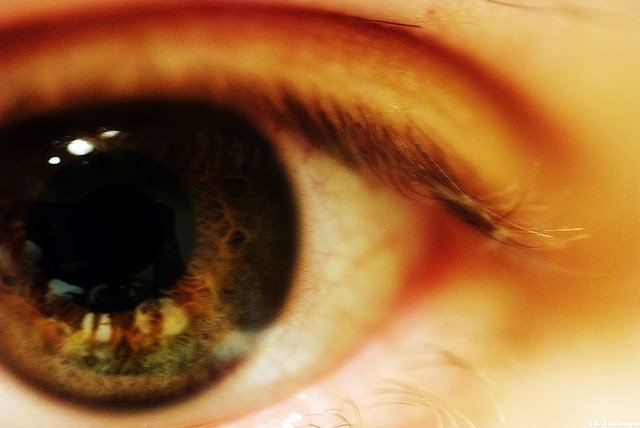According to British scientists, the prospect of reversing blindness has made a significant leap.
An animal study in the journal Nature Biotechnology showed the part of the eye which actually detects light can be repaired using stem cells.
The team at Moorfields Eye Hospital and University College London say human trials are now, for the first time, a realistic prospect.
Experts described it as a “significant breakthrough” and “huge leap” forward.
Photoreceptors are the cells in the retina which react to light and convert it into an electrical signal which can be sent to the brain.
However, these cells can die off in some causes of blindness such as Stargardt’s disease and age-related macular degeneration.
There are already trials in people to use stem cells to replace the “support” cells in the eye which keep the photoreceptors alive.
Now the London-based team has shown it is possible to replace the light-sensing cells themselves, raising the prospect of reversing blindness.

An animal study in the journal Nature Biotechnology showed the part of the eye which actually detects light can be repaired using stem cells
They have used a new technique for building retinas in the laboratory. It was used to collect thousands of stem cells, which were primed to transform into photoreceptors, and injected them into the eyes of blind mice.
The study showed that these cells could hook up with the existing architecture of the eye and begin to function.
However, the effectiveness is still low. Only about 1,000 cells out of a transplant of 200,000 actually hooked up with the rest of the eye.
Lead researcher Prof. Robin Ali said: “This is a real proof of concept that photoreceptors can be transplanted from an embryonic stem cells source and it give us a route map to now do this in humans.
“That’s why we’re so excited, five years is a now a realistic aim for starting a clinical trial.”
The eye is one of the most advanced fields for stem cell research.
It is relatively simple as the light sensing cells only have to pass their electrical message on to one more cell in order to get their message to the brain, unlike an attempt to reverse dementia which would require cells to hook up with far more cells all across the brain.
The immune system is also very weak in the eye so there is a low chance of the transplant being rejected. A few cells can also make a big difference in the eye. Tens of thousands of stem cells in the eye could improve vision, but that number of stem cells would not regenerate a much larger organ such as a failing liver.
British researchers have reported that totally blind mice have had their sight restored by injections of light-sensing cells into the eye.
The team in Oxford said their studies closely resemble the treatments that would be needed in people with degenerative eye disease.
Similar results have already been achieved with night-blind mice.
Experts said the field was advancing rapidly, but there were still questions about the quality of vision restored.
Patients with retinitis pigmentosa gradually lose light-sensing cells from the retina and can become blind.
The research team, at the University of Oxford, used mice with a complete lack of light-sensing photoreceptor cells in their retinas. The mice were unable to tell the difference between light and dark.
They injected “precursor” cells which will develop into the building blocks of a retina once inside the eye. Two weeks after the injections a retina had formed, according to the findings presented in the Proceedings of the National Academy of Sciences journal.

British researchers have reported that totally blind mice have had their sight restored by injections of light-sensing cells into the eye
Prof. Robert MacLaren said: “We have recreated the whole structure, basically it’s the first proof that you can take a completely blind mouse, put the cells in and reconstruct the entire light-sensitive layer.”
Previous studies have achieved similar results with mice that had a partially degenerated retina. Prof. Robert MacLaren said this was like “restoring a whole computer screen rather than repairing individual pixels”.
The mice were tested to see if they fled being in a bright area, if their pupils constricted in response to light and had their brain scanned to see if visual information was being processed by the mind.
Prof Pete Coffee, from the Institute of Ophthalmology at University College London, said the findings were important as they looked at the “most clinically relevant and severe case” of blindness.
“This is probably what you would need to do to restore sight in a patient that has lost their vision,” he said.
However, he said this and similar studies needed to show how good the recovered vision was as brain scans and tests of light sensitivity were not enough.
He said: “Can they tell the difference between a nasty animal and something to eat?”
Prof. Robin Ali published research in the journal Nature showing that transplanting cells could restore vision in night-blind mice and then showed the same technique worked in a range of mice with degenerated retinas.
He said: “These papers demonstrate that it is possible to transplant photoreceptor cells into a range of mice even with a severe level of degeneration.
“I think it’s great that another group is showing the utility of photoreceptor transplantation.”
Researchers are already trialing human embryonic stem cells, at Moorfields Eye Hospital, in patients with Stargardt’s disease. Early results suggest the technique is safe but reliable results will take several years.
Retinal chips or bionic eyes are also being trailed in patients with retinitis pigmentosa.


